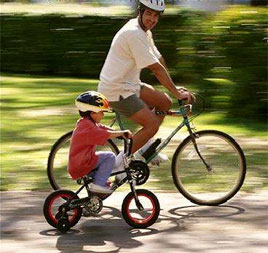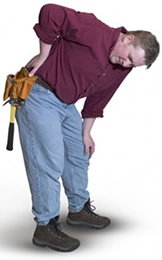 Preventing back injuries is a major workplace safety challenge. According to the Bureau of Labor Statistics, more than one million workers suffer back injuries each year, and back injuries account for one of every five workplace injuries or illnesses. Further, one-fourth of all compensation indemnity claims involve back injuries, costing industry billions of dollars on top of the pain and suffering borne by employees.
Preventing back injuries is a major workplace safety challenge. According to the Bureau of Labor Statistics, more than one million workers suffer back injuries each year, and back injuries account for one of every five workplace injuries or illnesses. Further, one-fourth of all compensation indemnity claims involve back injuries, costing industry billions of dollars on top of the pain and suffering borne by employees.
Month: May 2015
Make Water Safety a Priority
 Swim in designated areas supervised by lifeguards.
Swim in designated areas supervised by lifeguards.- Always swim with a buddy; do not allow anyone to swim alone. Even at a public pool or a lifeguarded beach, use the buddy system!
- Ensure that everyone in the family learns to swim well. Enroll in age-appropriate Red Cross water orientation and Learn-to-Swim courses.
- Never leave a young child unattended near water and do not trust a child’s life to another child; teach children to always ask permission to go near water.
- Have young children or inexperienced swimmers wear U.S. Coast Guard-approved life jackets around water, but do not rely on life jackets alone.
- Establish rules for your family and enforce them without fail. For example, set limits based on each person’s ability, do not let anyone play around drains and suction fittings, and do not allow swimmers to hyperventilate before swimming under water or have breath-holding contests.
- Even if you do not plan on swimming, be cautious around natural bodies of water including ocean shoreline, rivers and lakes. Cold temperatures, currents and underwater hazards can make a fall into these bodies of water dangerous.
- If you go boating, wear a life jacket! Most boating fatalities occur from drowning.
- Avoid alcohol use. Alcohol impairs judgment, balance and coordination; affects swimming and diving skills; and reduces the body’s ability to stay warm.
via Water Safety Information | Tips for Kids & Adults | American Red Cross.
Saving Sudden Cardiac Arrest Victims at Work
 There are 220,000 victims of sudden cardiac arrest per year in the United States; about 10,000 sudden cardiac arrests occur at work.
There are 220,000 victims of sudden cardiac arrest per year in the United States; about 10,000 sudden cardiac arrests occur at work.
Waiting for the arrival of emergency medical system personnel results in only 5-7% survival.
Studies with immediate defibrillation have shown up to 60% survival one year after sudden cardiac arrest.
Automated external defibrillators
An automated external defibrillator (AED) is a medical device designed to analyze the heart rhythm and deliver an electric shock to victims of ventricular fibrillation to restore the heart rhythm to normal. Ventricular fibrillation is the uncoordinated heart rhythm most often responsible for sudden cardiac arrest.
Sudden cardiac arrest
Sudden cardiac arrest occurs when ventricular fibrillation takes place or when the heart stops beating altogether. Without medical attention, the victim collapses, loses consciousness, becomes unresponsive, and dies. Many victims have no prior history of heart disease and are stricken without warning.
Causes of sudden cardiac arrest
- Heart attack
- Electrocution
- Asphyxiation (loss of consciousness and death caused by inadequate oxygen in the work environment, such as in a confined space).
Reasons for AEDs in the workplace
- Workers may suffer sudden cardiac arrest while on the job.
- Onsite AEDs save precious treatment time, and can improve survival odds because they can be used before emergency medical service (EMS) personnel arrive.
- A heart rhythm in ventricular fibrillation may only be restored to normal by an electric shock.
- The AED is compact, lightweight, portable, battery operated, safe, and easy to use.
Placement of AEDs
- AEDs should be conveniently installed to ensure response within 3-5 minutes.
- Areas where many people work closely together, such as assembly lines and office buildings.
- Close to a confined space.
- Areas where electric-powered devices are used.
- Outdoor worksites where lightning may occur.
- Health units where workers may seek treatment for heart attack symptoms.
- Company fitness units and cafeterias.
- Remote sites, such as off-shore drilling rigs, construction projects, marine vessels, power transmission lines, and energy pipe lines.
AED program cost
AEDs cost $1200-$3000 per device. Training, annual retraining, and administrative costs are additional.
AED training
Your workers can easily be trained to:
- Recognize sudden cardiac arrest and notify EMS personnel,
- Perform cardiopulmonary resuscitation (CPR),
- Provide early defibrillation with an AED, and
- Care for the victim until EMS personnel arrive.
Campfire Safety Tips for Kids
 Have you thought about a safer way to have a warm, crackling fire in your camping area? Smokey Bear has given seven tips for you and your parents to follow when you want a campfire. Always ask a parent to help you when around a fire because fires can be dangerous.
Have you thought about a safer way to have a warm, crackling fire in your camping area? Smokey Bear has given seven tips for you and your parents to follow when you want a campfire. Always ask a parent to help you when around a fire because fires can be dangerous.
- Dig a small pit away from overhanging branches. Most parks have campfire pits ready and waiting for you.
- Circle the pit with rocks or be sure it already has a metal fire ring.
- Clear a five-foot area around the pit down to the soil.
- Keep a bucket of water and a shovel nearby.
- Stack extra wood upwind and away from the fire.
- After lighting, do not discard the match until it is cold.
- Never leave a campfire unattended, not even for a minute.
Accident/Incident Investigation
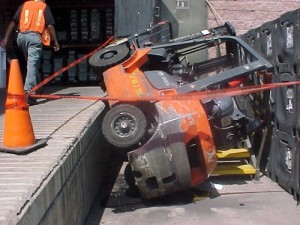 The investigative report should answer six key questions: who, what, when, where, why, and how. Fact should be distinguished from opinion, and both should be presented carefully and clearly. The report should include thorough interviews with everyone with any knowledge of the incident. A good investigation is likely to reveal several contributing factors, and it probably will recommend several preventive actions.
The investigative report should answer six key questions: who, what, when, where, why, and how. Fact should be distinguished from opinion, and both should be presented carefully and clearly. The report should include thorough interviews with everyone with any knowledge of the incident. A good investigation is likely to reveal several contributing factors, and it probably will recommend several preventive actions.
Get Enough Sleep
 Everyone needs to get enough sleep. Sleep helps keep your mind and body healthy.
Everyone needs to get enough sleep. Sleep helps keep your mind and body healthy.
How much sleep do I need? Most adults need 7 to 8 hours of good quality sleep on a regular schedule each night. Make changes to your routine if you can’t find enough time to sleep. Getting enough sleep isn’t only about total hours of sleep. It’s also important to:
- Go to sleep at about the same time every day.
- Get good quality sleep so you feel rested when you wake up.
If you often have trouble sleeping – or if you don’t feel well rested after sleeping – talk with your doctor.
via Get Enough Sleep.
Lockout-tagout
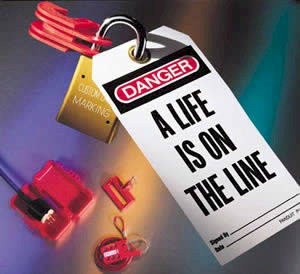 Lockout-tagout (LOTO) or lock and tag is a safety procedure which is used in industry and research settings to ensure that dangerous machines are properly shut off and not started up again prior to the completion of maintenance or servicing work. It requires that hazardous power sources be “isolated and rendered inoperative” before any repair procedure is started. “Lock and tag” works in conjunction with a lock usually locking the device or the power source with the hasp, and placing it in such a position that no hazardous power sources can be turned on. The procedure requires that a tag be affixed to the locked device indicating that it should not be turned on.
Lockout-tagout (LOTO) or lock and tag is a safety procedure which is used in industry and research settings to ensure that dangerous machines are properly shut off and not started up again prior to the completion of maintenance or servicing work. It requires that hazardous power sources be “isolated and rendered inoperative” before any repair procedure is started. “Lock and tag” works in conjunction with a lock usually locking the device or the power source with the hasp, and placing it in such a position that no hazardous power sources can be turned on. The procedure requires that a tag be affixed to the locked device indicating that it should not be turned on.
Preventing Eye Injuries at Home
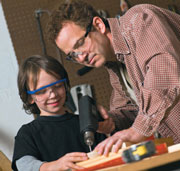 We want all Americans to be aware of the dangers to their eyes at home, in the workplace and while playing sports.
We want all Americans to be aware of the dangers to their eyes at home, in the workplace and while playing sports.
Thousands of eye accidents happen each day; 90 percent of these are preventable with the use of appropriate safety eyewear.
Because there are good eye safety regulations in the workplace, the home is the source of the fastest-growing number of eye injuries. Eye injuries are almost as great a danger to bystanders as the people using dangerous tools or chemicals in the home. Good eye protection is just as important for those watching you work as for the workers themselves.
Walking: Trim Your Waistline, Improve Your Health
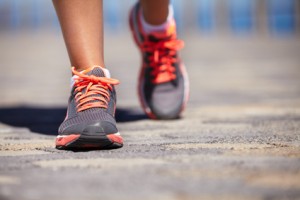 Can you really walk your way to fitness? You bet! Get started today.
Can you really walk your way to fitness? You bet! Get started today.
Physical activity doesn’t need to be complicated. Something as simple as a daily brisk walk can help you live a healthier life.
For example, regular brisk walking can help you:
- Maintain a healthy weight
- Prevent or manage various conditions, including heart disease, high blood pressure and type 2 diabetes
- Strengthen your bones
- Lift your mood
- Improve your balance and coordination
The faster, farther and more frequently you walk, the greater the benefits.
Turning your normal walk into a fitness stride requires good posture and purposeful movements. Ideally, here’s how you’ll look when you’re walking:
- Your head is up. You’re looking forward, not at the ground.
- Your neck, shoulders and back are relaxed, not stiffly upright.
- You’re swinging your arms freely with a slight bend in your elbows. A little pumping with your arms is OK.
- Your stomach muscles are slightly tightened and your back is straight, not arched forward or backward.
- You’re walking smoothly, rolling your foot from heel to toe.
As you start your walking routine, remember to:
- Get the right gear. Choose shoes with proper arch support, a firm heel and thick flexible soles to cushion your feet and absorb shock. If you walk outdoors when it’s dark, wear bright colors or reflective tape for visibility.
- Choose your course carefully. If you’ll be walking outdoors, avoid paths with cracked sidewalks, potholes, low-hanging limbs or uneven turf.
- Warm up. Walk slowly for five to 10 minutes to warm up your muscles and prepare your body for exercise.
- Cool down. At the end of your walk, walk slowly for five to 10 minutes to help your muscles cool down.
- Stretch. After you cool down, gently stretch your muscles. If you’d rather stretch before you walk, remember to warm up first.
For most healthy adults, the Department of Health and Human Services recommends at least two hours and 30 minutes a week of moderate aerobic activity or one hour and 15 minutes a week of vigorous aerobic activity — preferably spread throughout the week — and strength training exercises at least twice a week.
As a general goal, aim for at least 30 minutes of physical activity a day. If you can’t set aside that much time, try two 15-minute sessions or three 10-minute sessions throughout the day.
Remember, though, it’s OK to start slowly — especially if you haven’t been exercising regularly. You might start with five minutes a day the first week, and then increase your time by five minutes each week until you reach at least 30 minutes.
Keeping a record of how many steps you take, the distance you walk and how long it takes can help you see where you started from and serve as a source of inspiration. Just think how good you’ll feel when you see how many miles you’ve walked each week, month or year.
Record these numbers in a walking journal or log them in a spreadsheet or a physical activity app. Another option is to use an electronic device — such as a pedometer — to calculate steps and distance.
Starting a walking program takes initiative. Sticking with it takes commitment. To stay motivated:
- Set yourself up for success. Start with a simple goal, such as, “I’ll take a 10-minute walk during my lunch break.” When your 10-minute walk becomes a habit, set a new goal, such as, “I’ll walk for 20 minutes after work.” Soon you could be reaching for goals that once seemed impossible.
- Make walking enjoyable. If you don’t enjoy solitary walks, ask a friend or neighbor to join you. If you’re invigorated by groups, join a health club.
- Vary your routine. If you walk outdoors, plan several different routes for variety. If you’re walking alone, be sure to tell someone which route you’re taking.
- Take missed days in stride. If you find yourself skipping your daily walks, don’t give up. Remind yourself how good you feel when you include physical activity in your daily routine — and then get back on track.
Once you take that first step, you’re on the way to an important destination — better health.
via Walking: Trim your waistline, improve your health – Mayo Clinic.
Kids and Bicycle Safety
Before using your bicycle, make sure it is ready to ride. You should always inspect your bike to make sure all parts are secure and working properly.
Remember to:
- Wear a Properly Fitted Bicycle Helmet. Protect your brain, save your life.
- Adjust Your Bicycle to Fit. Stand over your bicycle. There should be 1 to 2 inches between you and the top tube (bar) if using a road bike and 3 to 4 inches if a mountain bicycle. The seat should be level front to back. The seat height should be adjusted to allow a slight bend at the knee when the leg is fully extended. The handlebar height should be at the same level with the seat.
- Check Your Equipment. Before riding, inflate tires properly and check that your brakes work.
- See and Be Seen. Whether daytime, dawn, dusk, foul weather, or at night, you need to be seen by others. Wearing white has not been shown to make you more visible. Rather, always wear neon, fluorescent, or other bright colors when riding day or night. Also wear something that reflects light, such as reflective tape or markings, or flashing lights. Remember, just because you can see a driver doesn’t mean the driver can see you.
- Control Your Bicycle. Always ride with at least one hand on the handlebars. Carry books and other items in a bicycle carrier or backpack.
- Watch for and Avoid Road Hazards. Be on the lookout for hazards such as potholes, broken glass, gravel, puddles, leaves, and dogs. All these hazards can cause a crash. If you are riding with friends and you are in the lead, yell out and point to the hazard to alert the riders behind you.
- Avoid Riding at Night. It is far more dangerous to ride at night than during the day because you are harder for others to see. If you have to ride at night, wear something that makes you more easily seen by others. Make sure you have reflectors on the front and rear of your bicycle (white lights on the front and red rear reflectors are required by law in many States), in addition to reflectors on your tires, so others can see you.
Many bicycle-related crashes resulting in injury or death are associated with the bicyclist’s behavior, including such things as not wearing a bicycle helmet, riding into a street without stopping, turning left or swerving into traffic that is coming from behind, running a stop sign, and riding the wrong way in traffic. To maximize your safety, always wear a helmet AND follow the rules of the road.

